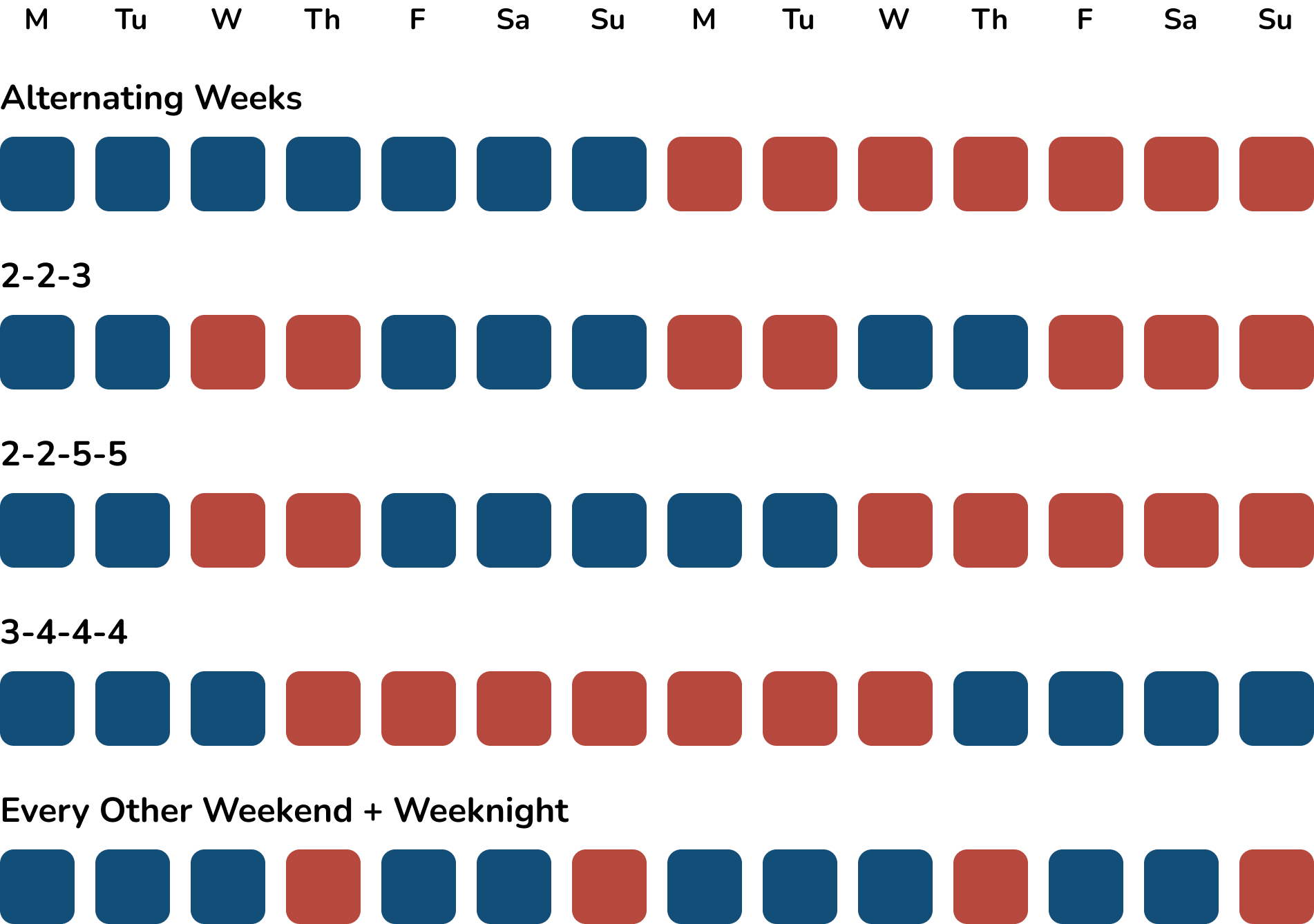Onward Tip: Parenting Plan Schedule Overview
Parenting after divorce isn’t one-size-fits-all — and figuring out the right schedule can feel super overwhelming. Whether you’re aiming for equal time on the calendar or a plan that works around school, work, and distance, there are a handful of tried-and-true approaches that courts, mediators, and co-parents use time and again.
Below, we break down the most common parenting plan schedules, so you can see your options at a glance — from 50/50 arrangements to more traditional primary-and-visitation setups.
Most Common Parenting Time Schedules
50/50 Shared Parenting
Alternating Weeks
Each parent has the child(ren) for 7 days, then exchanges
- Pros: Simple, fewer transitions
- Cons: Longer time apart from the child(ren)
2-2-3 Schedule
Parent A has 2 days, Parent B has 2 days, then Parent A has a 3-day weekend; switches the next week
For example:
+ Parent A gets M, Tu
+ Then Parent B gets, W, Th
+ Then Parent A gets F, Sa, Su
+ Parent B gets M, Tu
+ Then Parent A gets, W, Th
+ Then Parent B gets F, Sa, Su
+ Then the cycle restarts
- Pros: Frequent contact with both parents
- Cons: More transitions
2-2-5-5 Schedule
Parent A always has Mon–Tue, Parent B always has Wed–Thu, and weekends alternate in 5-day blocks
For example:
+ Parent A gets M, Tu
+ Then Parent B gets, W, Th
+ Then Parent A gets F, Sa, Su, M, Tu
+ Then Parent B gets, W, Th, F, Sa, Su
+ Then the cycle restarts
- Pros: Predictable; aligns with school weeks
- Cons: Still a decent number of transitions
3-4-4-3 Schedule
Parent A has 3 days, then Parent B has 4 days. The next week, Parent A has 4 days and Parent B has 3 (alternates weekly)
- Pros: Balanced, predictable
- Cons: Requires consistency to avoid confusion
Primary Custody + Visitation
Every Other Weekend + One Weeknight
Primary parent during the week; other parent gets alternating weekends and possibly one midweek evening/overnight
Most common in cases where one parent’s schedule or distance prevents 50/50
Every Other Weekend Only
Non-primary parent has Friday evening–Sunday evening every other week
Common when there’s significant distance, travel, or scheduling challenges
Extended Summer / Holiday Blocks
One parent has primary custody during the school year; the other gets longer blocks during summer or school breaks
Often used when parents live in different cities/states
Younger Children / Special Needs
Frequent Short Visits
Multiple shorter visits during the week to maintain frequent contact without long separations (often used for very young children)
Step-Up Plans
Parenting time starts with shorter visits and gradually increases over months/years as the child adjusts, often after separation or in high-conflict situations
Common Parenting Plans (Two Week View)

See Our Article: What is a Parenting Plan?
